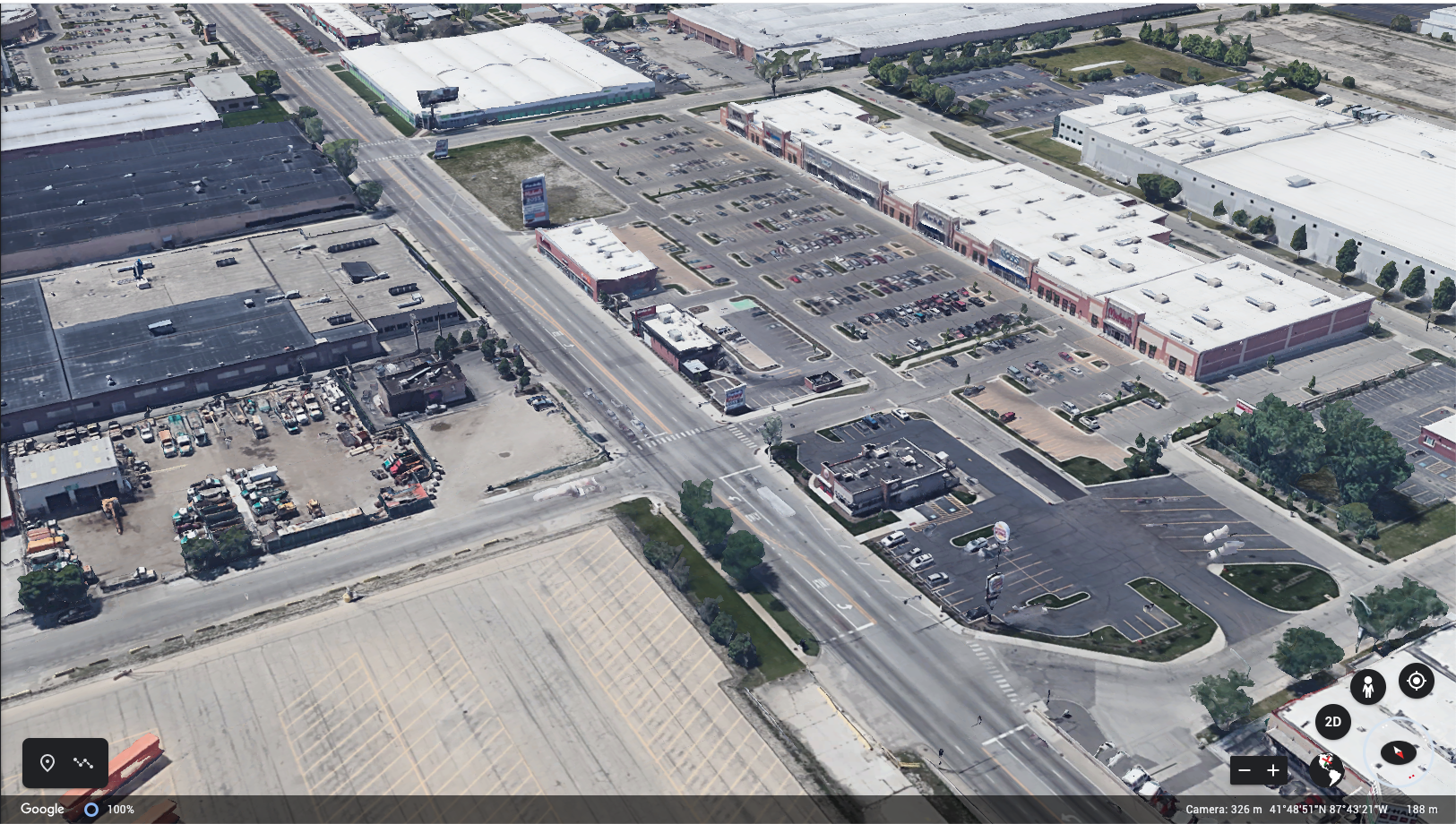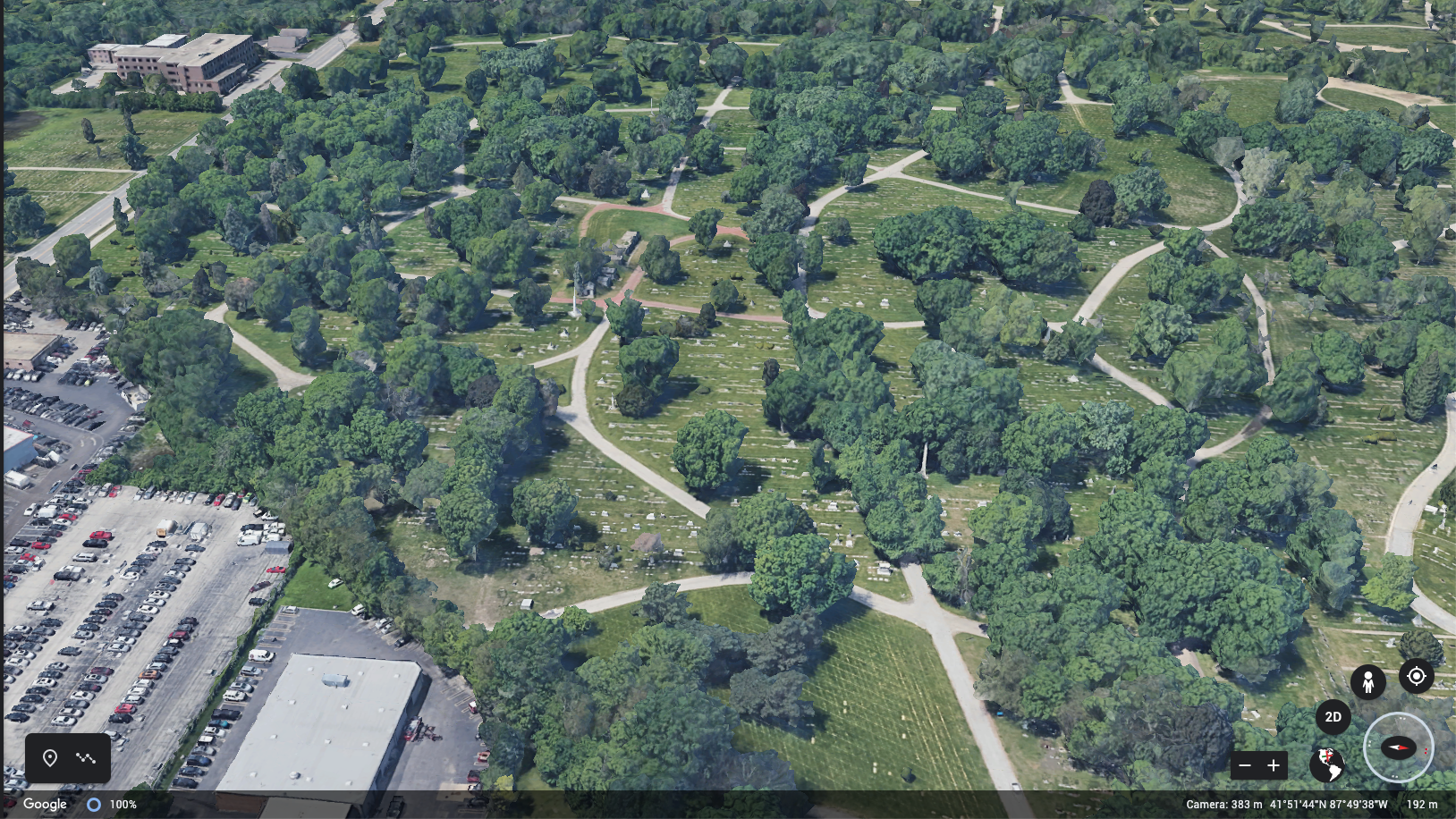Coordinates to Memories
Horizon C
where a body falls [in memoriam]
Where a body falls from 16 shots to where a body rests for eternity, the sites surrounding death are intimately blanketed. These sites are revisited by varying audiences that fluctuate from neighbors to mailmen, police officers to investigators, coroners to funeral directors, family members to landscape workers. The sites—“murder site” and “grave site”—become a public display to mark a person’s life ended. It is within the site’s earthen layers (soil, sand, concrete, asphalt, gravel) that we find ourselves continually reminded of the events that took place.
- - -
In Memoriam, Block 4100 – soil, concrete, asphalt
A wreath and candles along side a neighboring roadway. A tree surrounded with paper flowers and wooden crosses nearby a street corner. A neighborhood gathered for a candle-light vigil. A lamppost wrapped in a hand-tied bow. A city block covered in a lush wave of carnations, roses, photographs, love notes, and prayers. A soft halo of crimson. The soil left rich with iron. And then into a layer of concrete, embedded in the asphalt. Stubborn and staining. Washed out, bruised.
What about the murder site’s effect on the victim’s families? The site’s literal and material layers thicken as it is no longer a tree nearby a Burger King or a section of neighborhood street commonly walked down. The site of an eight-foot by twenty-foot section of roadway or a patch of sidewalk could become a haunting memory of betrayal and disregard for human life. What do we do with the site? How could it return to “just another corner” again? Is there a way to collectively heal from trauma by removing the site’s materials and replacing them with new, untainted materials?
Site No. 1 – Murder
A glowing street corner. Yellow tape cordon. The familiar turned blue – flashing. A site to behold. A site to be forgotten. A site of action. And reaction. Recoil. A site where a body falls. A site where grass caresses the final exhale. Where concrete holds steady. Where soil is quenched by the violet outpour.
From a civilian’s perspective, the murder site seems to return quickly (sometimes too soon) to another spot by the side of the road. Despite the size and splendor of a temporary memorial, the informal placing of ephemera for a short duration of time, the murder penetrates beyond the surface. The murder site is the focal point of the (un)sterile soil. The site is forever marked by the body falling. No matter the amount of evidence removal, cleaning, investigation, speculation, or the passing of time, the site speaks volumes to the surrounding community and can be deafening to the victims’ families. The crime has been scrubbed clean but the traces of death remain. The earth, asphalt, concrete, gravel, sand, grass have been drowned. Can we heal by reducing and redacting? Can the site be un-blemished?
- - -
In Memoriam, Plot 32 – soil, concrete, granite
A wreath and stiff-backed chairs neatly lined in the neighborhood funeral home. A collaged poster of family photographs. Another wreath, a lone pot of white lilies, a single photograph, a holy Mother. A name etched deeply into cool granite. Dates reminding viewers it was not long enough. A manicured patch of sod layered over rich, landscaped soil. Six-feet deep. And then a layer of concrete, again. New and untrodden. Clean, unmarked.
What is there to make of the grave site? Is this a chance to reflect on life versus death? Does the grave site provide a rebirth or restoration of the body fallen? Will an eight-foot by three-foot rectangular patch of lawn hold a new memory? Is it possible for this site to contain a more cherished and respected view of human life? Can the grave site reintegrate the earthen materials that once held the fallen body? Is this the chance for the body to lay to rest with new meaning? Become individualized and recognized as “not another victim?”
Site No. 2 – Grave
A meditative park. Trees provide shade for those who remain cool. A site to be returned to. A site to provide comfort. A site where a body rests. A site with a granite headboard for weary heads. A site with an earthen bed. Where concrete lays like a homemade quilt. Where fertile sod returns the body home.
The final resting place—the grave site—provides a more formal memorial or what is to be considered the traditional and long-standing memorial. The grave site utilizes the sterile soil, the opportunity to provide a marked site of peace and innocence. A site unscathed by brutality, inexperience, and gut-reactions. It turns over soil deep from the earth, requires fresh concrete, and untouched sod. The site is another hole dug and neatly packed back together again. Can we heal by revisiting and remembering? Can the site be un-blemished?
Can we repurpose the tumultuous, unmanageable earth
that has held the bodies of murder victims?
Cradled the bodies of quick-decisions and protocols?
Can the soil be sterilized?
Coordinates as resources
Block 4100 S.
Murder site
41.817972, -87.724
Plot 32
Grave site
41.8664559,-87.8209534
Memorial ID
145138946
About our writer
Kel Dolan
As a collector of ephemera and keepsakes, Kel is perpetually curious by the historical narratives and personal records of objects and materials. Her engagement with artists and makers contributes to her writings and research on several topics including taxidermy objects as artistic medium, pop-up exhibition methods and collecting during the interwar period, and funerary practices and portraiture around the world. Kel earned her MA in Art History from the School of the Art Institute of Chicago and concurrent BAs in Art History and Psychology from Canisius College, Buffalo. Kel currently lives and works in Chicago as the project manager for an art/artifact installation company and coordinates her partner’s woodworking studio.
[above images] Aerial view of the slain site for LaQuan McDonald located at 4100 S Pulaski Rd, Chicago, IL 60632 (41.817972, -87.724) and and aerial view of the rest site for LaQuan McDonald located at Forest Home Cemetery, Chicago, IL.
(un)sterile soil across the U.S.
a growing map of murder plots
This video takes you to 88 murder plots across the Unites States in 15 minutes and 37 seconds via Google Earth.
[week 2] Segment 148 is dedicated to George Floyd.
This segment will be documented every week to reveal the growth and decay over 7 weeks.


